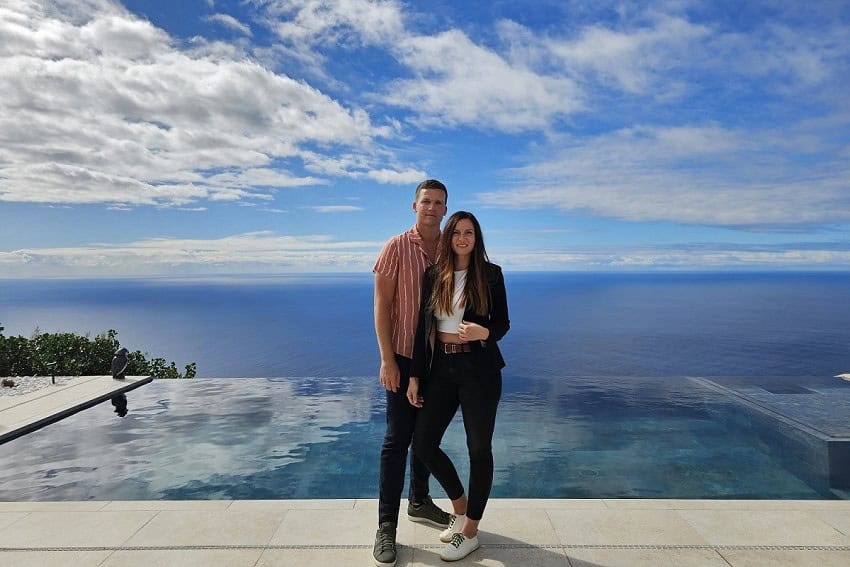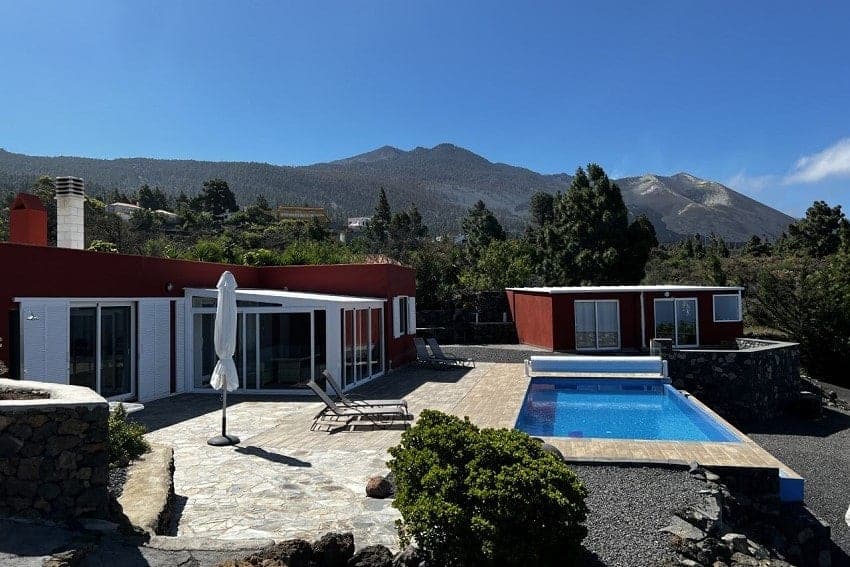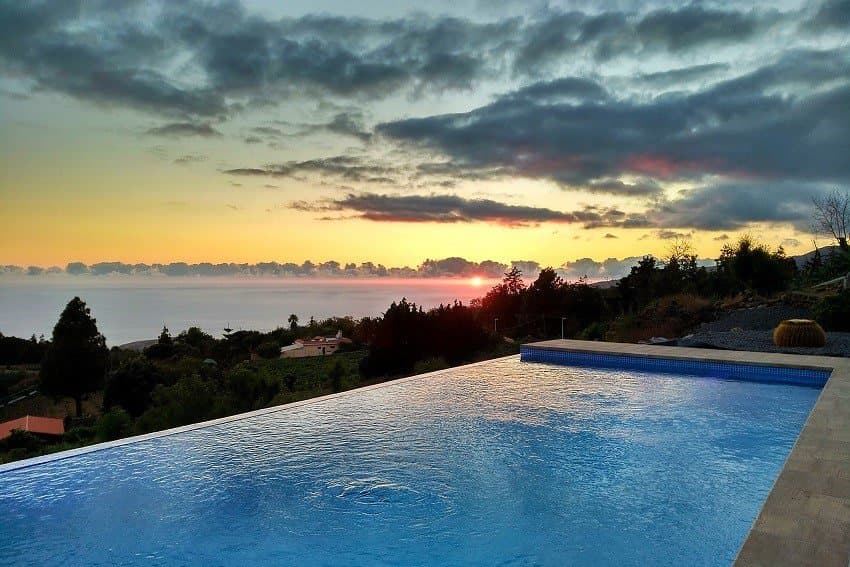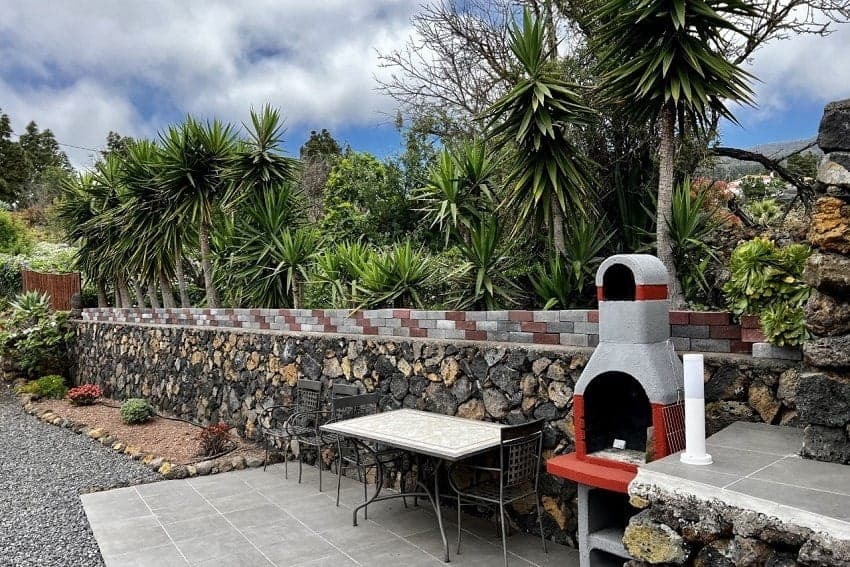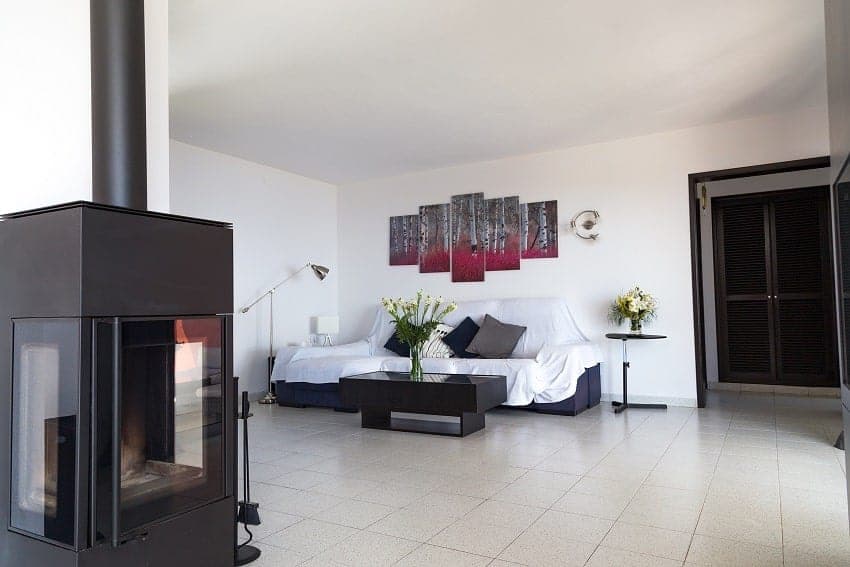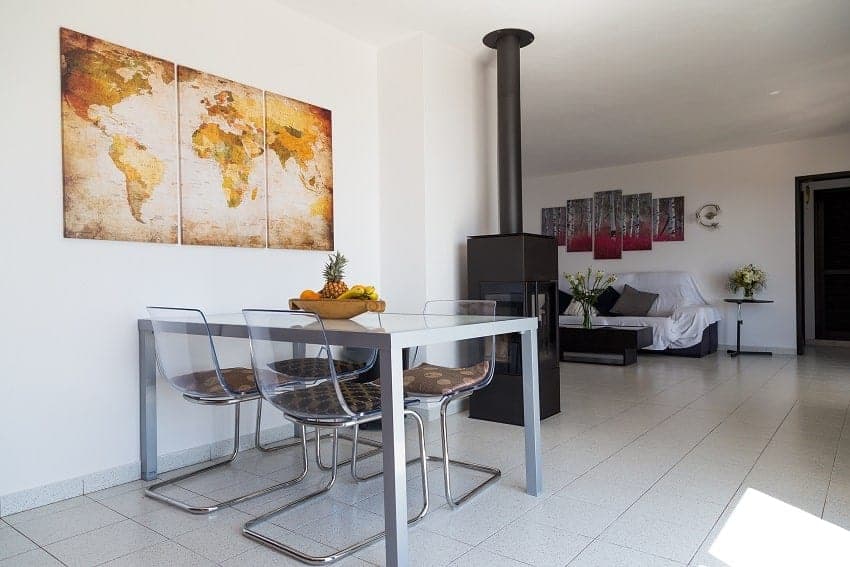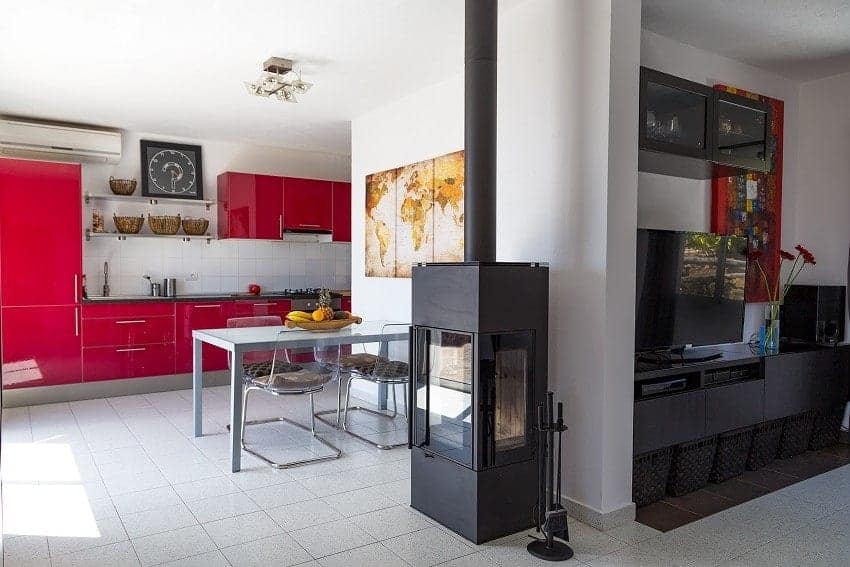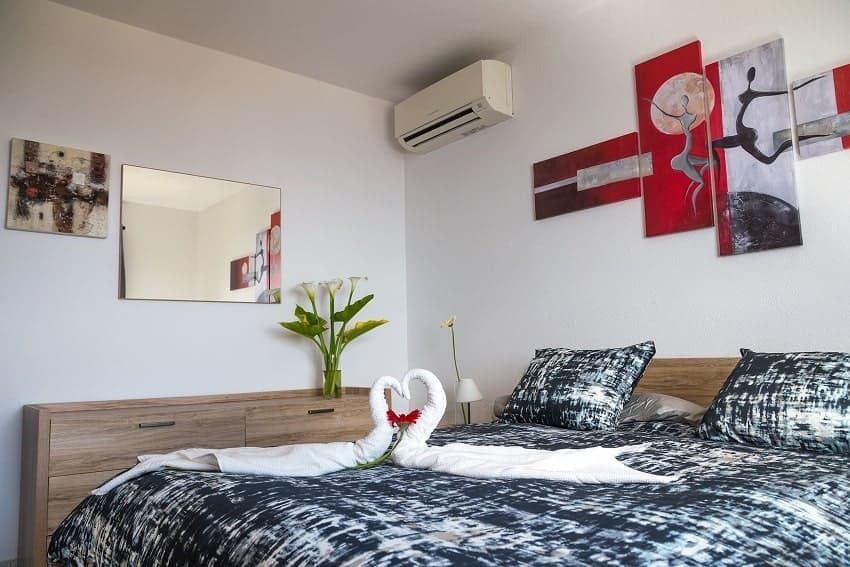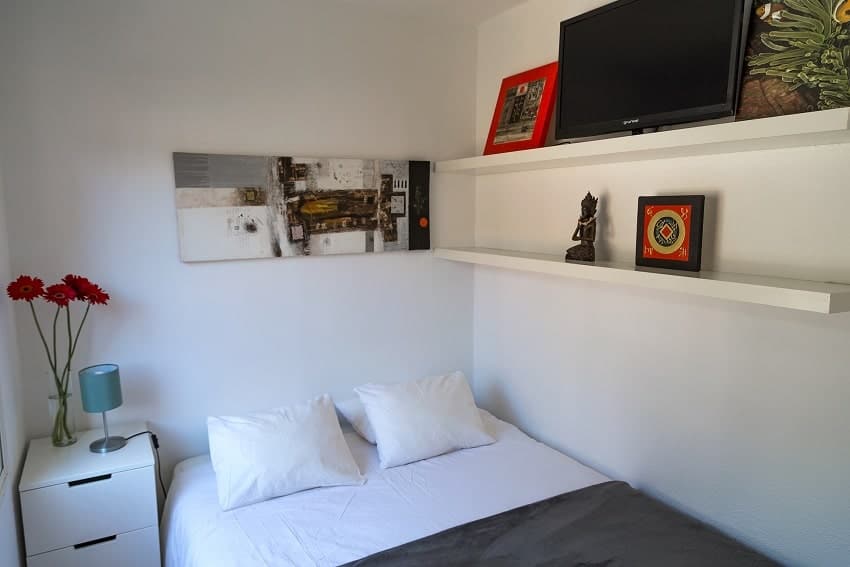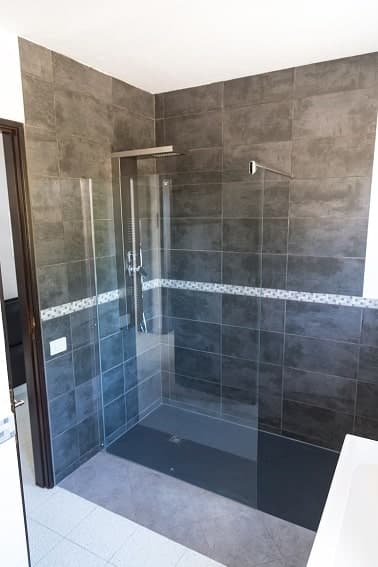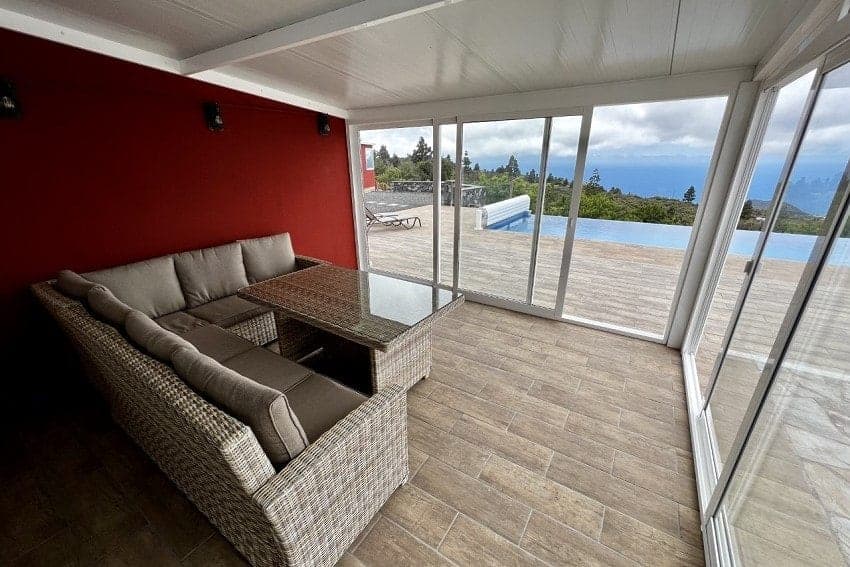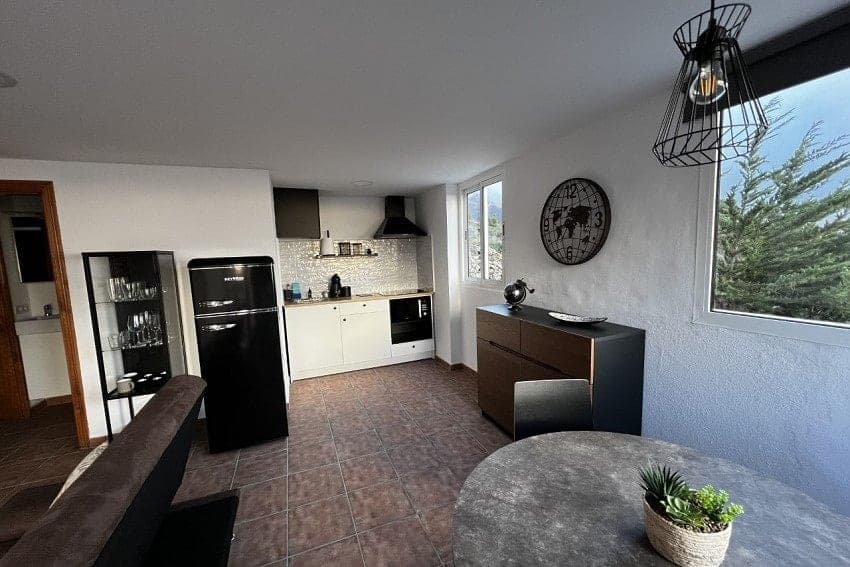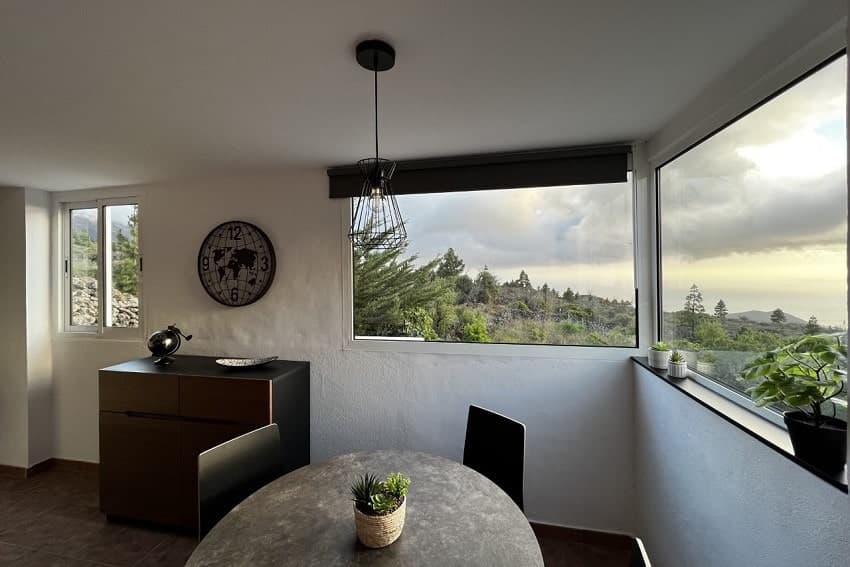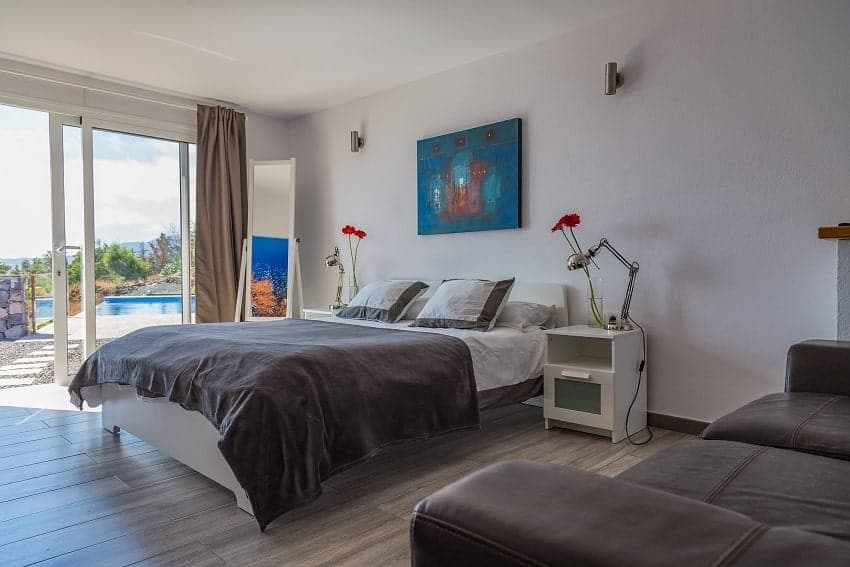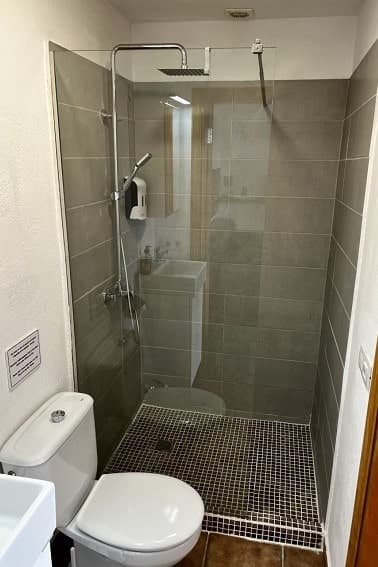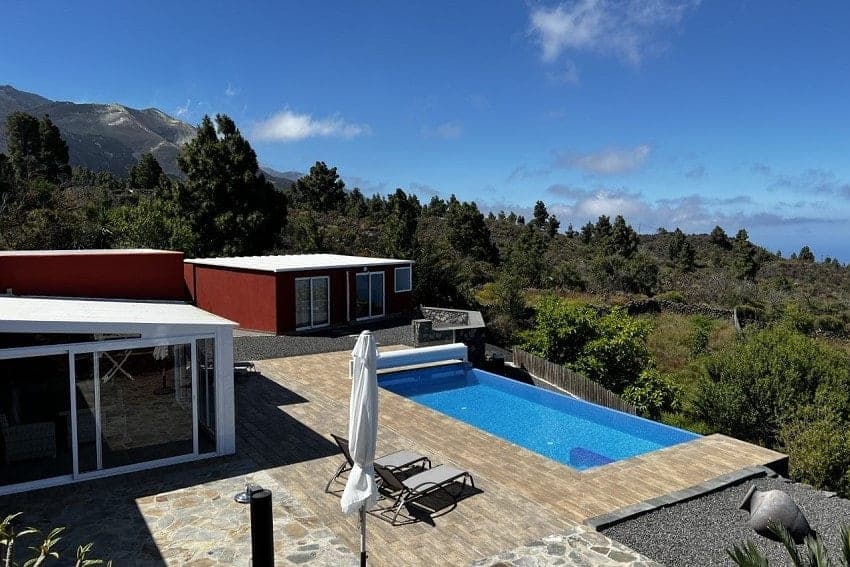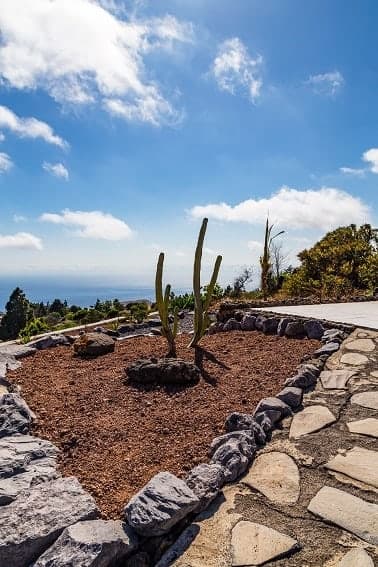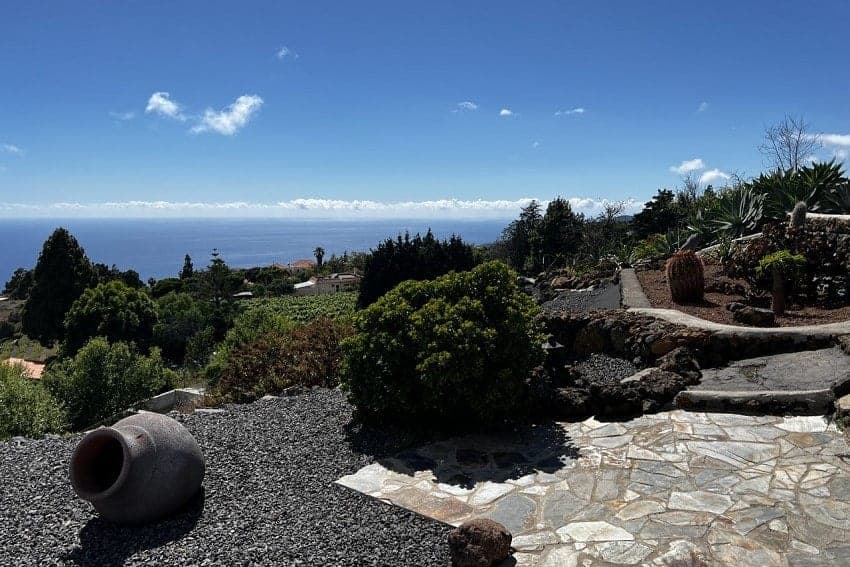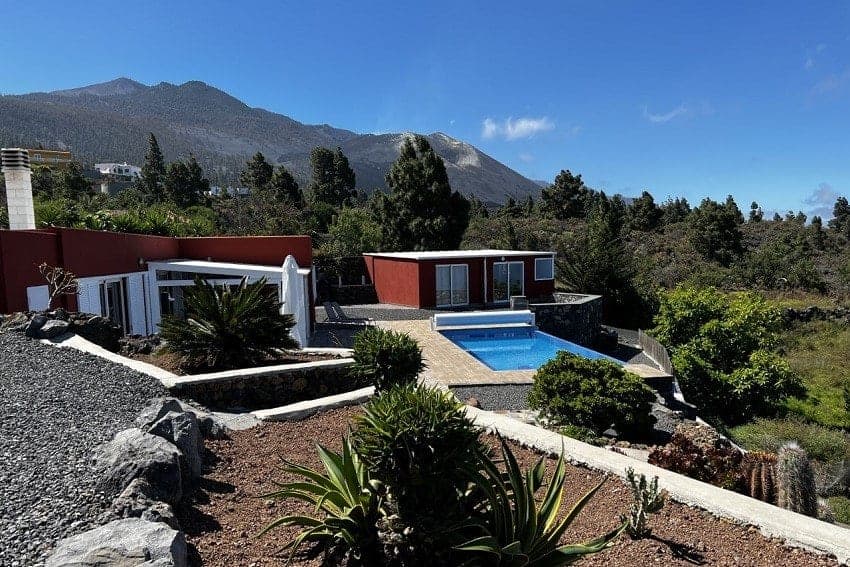Availability
Casa Puesta del Sol
 1
1  3 2
3 2 






Quiet and idyllic holiday home with fantastic sea views, private pool and unique sunsets.
Casa Puesta del Sol is located in Tacande (El Paso) at about 680 metres above sea level and is surrounded by a small garden with succulents and cacti. The detached holiday home is fashionably furnished and has a beautiful view of the sea, the mountains and the volcanic landscape.
Next to the main house of Casa Puesta del Sol there is a guest house with a small living area, kitchenette, bathroom and bedroom. The guest house is only opened for an occupancy of 5 persons or more; otherwise it remains closed.
The living area in the main house is directly connected to the fully equipped kitchen and has a central fireplace. A covered terrace extends in front of the living area and can be closed off by glass windows. The perfect place in all weather conditions, whether shady on hot days or protected on windy days.
Furthermore, there are two bedrooms with double beds and a bathroom with shower in the main house.
In the centre of the outdoor area is the private infinity pool with beautiful sea views – here you can enjoy the setting sun in wonderful surroundings. In addition to sun loungers, there is an outdoor solar shower and a barbecue area.
Facilities
- 1 Outdoor Shower
- 2 Bathrooms
- 3 Double Bedrooms
- Air Condition Cold
- Baby Cot
- Bed Linen & Towels are Provided
- Chimney
- Coffee Maker
- Dishwasher
- Electric Heating
- Electric Kettle
- Fridge / Freezer
- Garden
- Grill
- Hair Dryer
- High Chair
- Internet - WiFi
- Iron
- Living Room with Kitchen and Dining Room
- Outdoor Furniture
- Oven
- Parking Space
- Pool Electrically Heated (extra charge)
- Private Swimming Pool
- SAT-TV
- Shower
- Sofa
- Stove
- Sun Umbrellas
- Sunbeds
- Terrace
- Toaster
- Washing Machine
Internet
Location and Distances
Medical help
Check In / Check Out
Payment / Cancellation
Additional information
Accommodation review scores and score breakdown
Based on 3 reviews
Guest reviews are written by customers after their stay at Casa Puesta del Sol.
Guest reviews
-
03.03.2025
Roser is very friendly and always there to help if needed. The house is everything you wish for, for short or long stays. The beds are very comfortable, a full kitchen, a sunroom for windy or less warm days and a beautiful garden. The views are amazing, also on the new crater, and shops and supermarkets are a 10 minutes’ drive away. Highly recommended!
-
05.05.2024
Hemos disfrutado mucho nuestra estancia. La casa es muy cómoda y se encuentra muy bien situada. Una experiencia fantástica.
-
19.11.2023
Super Unterkunft, klasse Ausstattung, netter Host, einfach traumhafte Lage.
La Palma
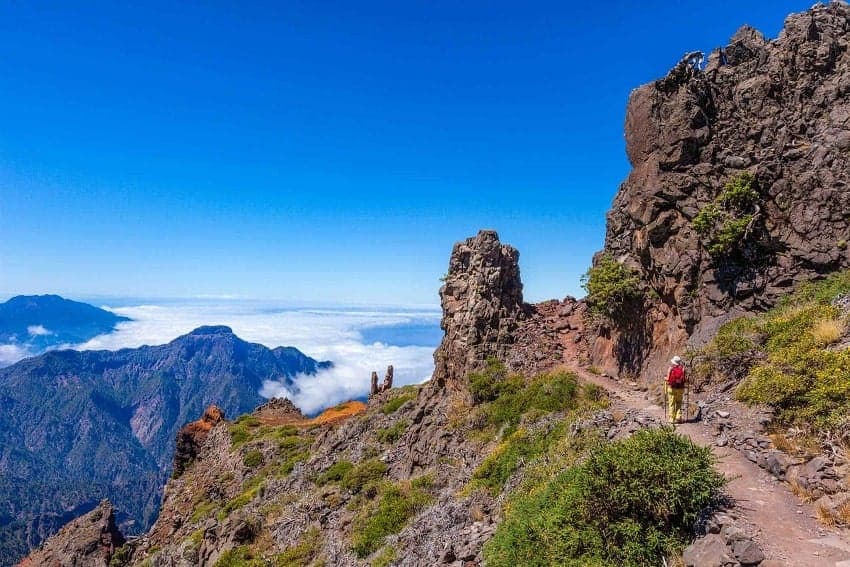
The island of La Palma offers breathtaking landscapes, remote beaches, imposing volcanoes, dense forests and incomparably starry skies.
With its 708 square kilometres, an elevation of 2.426m and its shape of a heart it is the most Western island of the Canary Island chain. Like every island in this archipelago, La Palma was created by volcanic activity. It is one of the youngest of the seven islands, dating back some 1.7 million years. The volcanic origin of La Palma is still clearly recognizable today, especially the southern part of the island with the dormant volcano Teneguía which last erupted in 1971, and offers interesting insights into its geological past.
The year-round mild climate with average temperatures between 18 and 27 degrees Celsius produce spring-summerlike weather as a result of the northeast trade winds.
This weather phenomenon is responsible for a pleasant subtropical climate and a rich green vegetation that prevails because of the humidity carried along in the trade winds. These moisture rich winds at certain times of the year also create a spectacular waterfall of clouds cascading down the central mountain faces and hence the nicknames Isla Verde – Green Island and Isla Bonita – Beautiful Island.
The unique geological structure of the island with its variety of vegetation zones and microclimates that are rarely found in the world on such a small area make this island a miniature universe. Each area of the island varies completely from another. In 1983 La Palma was declared a UNESCO biosphere reserve.
Another special feature of La Palma is the unique night sky. Due to its location in the Atlantic Ocean, sparse population, minimum light pollution and highest mountain peak Roque de los Muchachos 2.426m, the island was chosen as the location for one of the largest and modern observatories in the world.
The official population of the island is approximately 80,000 people. Traditional festivals such as the Bajada de la Virgen or Los Indianos carnival, famous far beyond the island’s borders, bear witness to the zest for life of the local people (Palmeros). Not only the geographical location, but also the numerous immigrants from Central and South America show a variety of Hispanic influences in island life, cuisine and cultural.
Read more...

